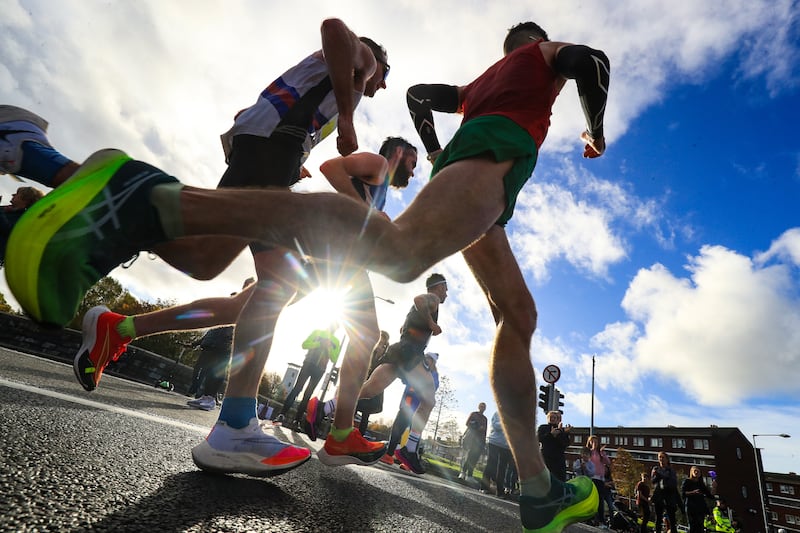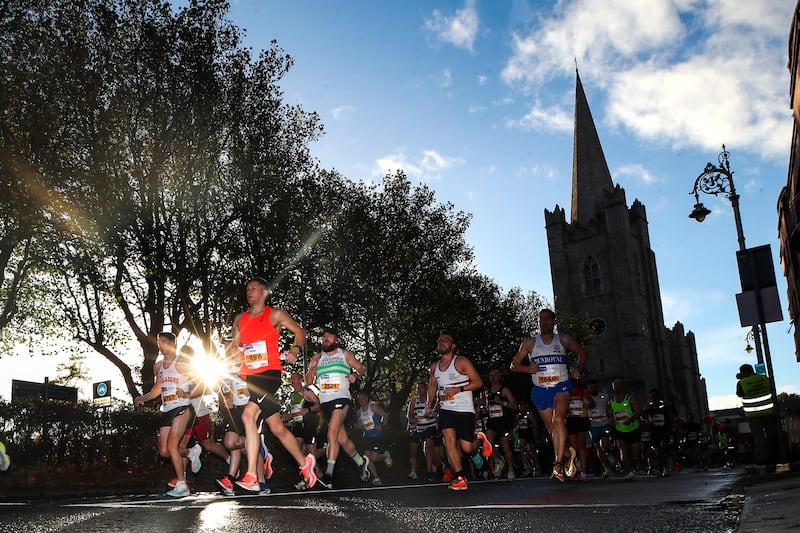All marathon journeys are about reaching your destination: the finish. In the eighth of our monthly series, The Irish Times continues its running lessons to help make that journey a little easier and a lot more fun – all the way to the finish of the 2023 Irish Life Dublin Marathon on October 29th.
It must be 20 years ago when my accountant called me on a Friday evening and asked had I any advice on running the Dublin Marathon. This was the Friday right before the marathon was happening, back when it was staged on the October bank holiday Monday.
He’d entered several months previously, more or less forgot about it, then realised it was only three days away. His training had been on and off (that’s putting it politely), but we had often talked about my first run in Dublin a few years before, in 2001, and wasn’t my training a bit all over the place too?
We laughed for a while, then I remember giving him the one piece of tactical advice which is the theme of this series: it’s not a sprint.
As difficult as it is to give any one piece of tactical advice in an event covering 26.2 miles (or 42.2km) from start to finish, with more than 20,000 runners, each with their own ambition or target finishing time, it’s this remembering not to sprint as if running away from a bull (that tactic is only allowed once the finish line is firmly in sight, and not in any illusory sense).

At this point in the Dublin Marathon countdown, however, just four weeks out from the event, those weeks soon turning into days, there is plenty of other tactical and practical advice to bear in mind.
As outlined in last month’s lesson, the training for my first Dublin Marathon in 2001 had been interrupted at various stages – August in particular was definitely more off than on – and it was only in the final four weeks when things ultimately came together.
There are two key aspects to these final four weeks: firstly, that build-up to what will likely be your longest training run before the race and, secondly, the necessary tapering period where the training is reduced to the bare minimum, and everything is geared towards waking up on marathon Sunday feeling as fresh and as race ready as possible.
It doesn’t matter if you’re running Dublin for the first time, the next time, or the last time – these two key aspects don’t change. There is some difference of opinion on when exactly to do the longest training run before the race; some say two weeks out, some say 10 days out, others say just a week out – and it shouldn’t be any later than that.

How long that longest training run should be depends entirely on the training load up to that point, plus your race ambition, target time, etc. For me, it was more a matter of time than distance, running for around 2½ hours (given I hadn’t planned on running any slower than that).
It’s also as much about practising the race-day rituals, ideally aiming to start that longest run at the same time the Dublin Marathon starts (8.45am), which allows for some practice and familiarity with what to eat the evening before and, more importantly, all the rituals of the morning itself.
This last long run – most of the last training runs, too – can also be useful in visualising being out there on race day, slipping into a familiar rhythm and patient flow, and focusing on being as relaxed as possible while running.
There are also differing opinions on the extent of the tapering period, but from the Monday before things should be slowing right down. A complete rest day midweek will help ensure absolute recovery from all the training done to date, but after that it’s better to keep up some short, easy runs in the final few days, again preferably at morning/race time.

This final tapering period – and some more natural idle time, perhaps – is also about completely familiarising yourself with everything about the race day. It’s worth noting, for example, that if you’ve been doing all your marathon training off kilometre markers, the Dublin Marathon is only marked every mile (and every 5km).
Also plan carefully for your race number and pack pickup. This only happens at the Irish Life Dublin Marathon Expo in the main hall of the Royal Dublin Society (RDS) on Friday October 27th (12-6pm) and Saturday October 28th (9am-7pm). The actual cut-off time for pack collection is 6pm on the Saturday. Having come so far, no excuse whatsoever for missing that.
Do
Familiarise yourself as much as possible with the race route. Those who have run Dublin before have a natural advantage here, and the route again remains unchanged from recent years, but there’s nothing worse than running a marathon and thinking, “where on earth am I running now?”
The Dublin Marathon organisers provide a handy video of the route to help in this process, and it’s also worth noting in advance where exactly are the water stations (where 250ml bottles of Ishka water are provided), the Lucozade Sport stations (served in cups in a variety of flavours), and also the two stations along the route where Enervit gels are supplied (if you haven’t tried that particular brand before, now is the time).
Make sure you’re also well familiar with the start area and race-entry routes at Fitzwilliam Street Upper. The course also remains open for seven hours, which means that when the last person crosses the start line after this time, runners are politely reminded to move to the footpath to allow the roads to reopen again.
Don’t
Leave any room or time for panic. The Dublin Marathon has five different start times, starting with the wheelchair participants at 8:40am, followed by wave 1 at 8.45am, wave 2 at 9.05am, wave 3 at 9.25am and wave 4 at 9.45am.
Wave positions are allocated by your own predicted finishing times, and you can only start in your allocated waves (so no sudden or fast change in predicting times on race morning). At the baggage drop-off, only the clear plastic bags provided at registration are allowed, so don’t chance anything different here either.
It’s not entirely unknown for some runners to sleep it out on race day, although typically nerves and pre-race apprehension are enough of a guarantee that won’t happen. Just don’t rely on them: double set the alarm.
The oldest advice come marathon race day is don’t try anything different for breakfast (regular caffeine consumption included), and leave ample time for digestion too, ideally about two hours before your wave starts. Munching on a banana or two in the meantime, however, usually works better as a do than a don’t.
Targets
While there were 25,000 entries open last year, this year’s entry was reduced to 22,500 due to “infrastructure restrictions” around the course. Every one of those will likely have some sort of target finishing time in their head, even if not all of them will make it to that start.
Dublin, as with most big city marathons, provides pacers running on the day, of considerable assistance to anyone with a definite target time in mind. The pacers run at a steady effort throughout, aiming to finish a few seconds under each time band.
Pacers are allocated to each wave as follows: wave 1- 3:00, 3:10, 3:20; wave 2 – 3:30, 3:40, 3:50; wave 3 – 4:00, 4:10, 4:20; wave 4 – 4:30, 4:40, 4:50, 5:00.
There is no requirement to sign up or commit to any pacing group in advance. Simply turn up at your wave start, look for the pacing runners wearing large balloons, and stand in behind the corresponding time.
Then run along for as long as possible – constantly remembering of course that this is not a sprint.
Not a sprint: lessons in marathon running
Lesson 6 – www.irishtimes.com/sport/2023/08/07/not-a-sprint-lessons-in-marathon-running/
Lesson 1 – www.irishtimes.com/sport/athletics/2023/03/06/not-a-sprint-lessons-in-marathon-running/






